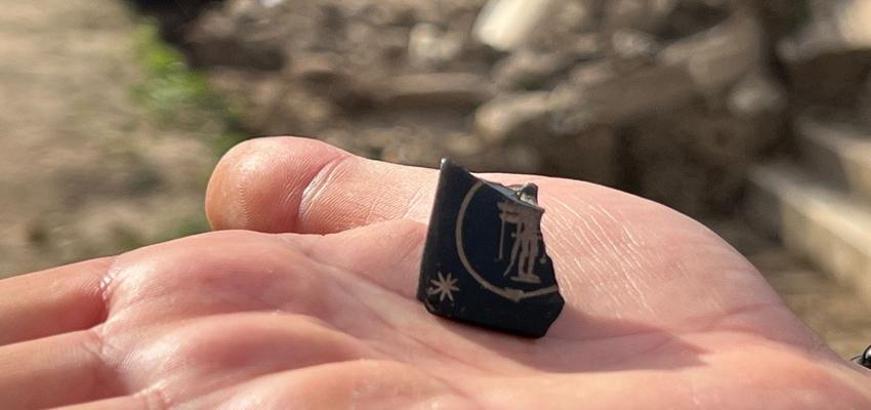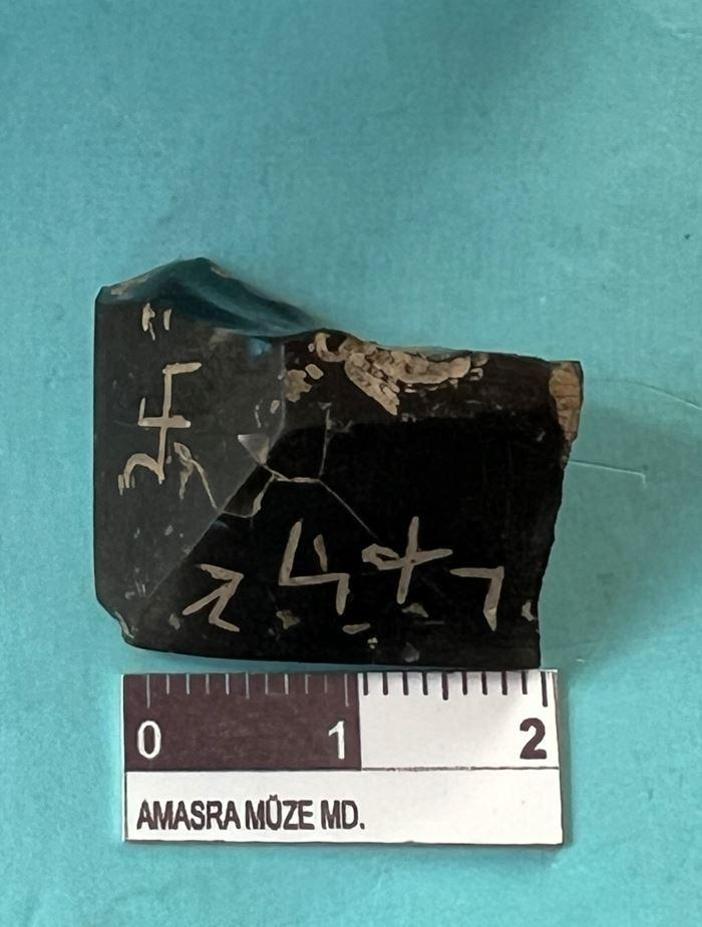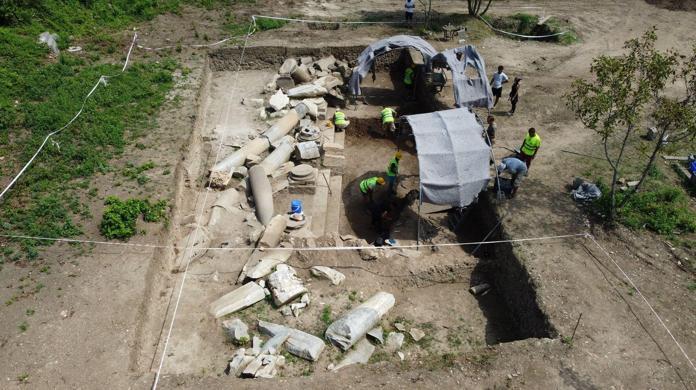‘Talismanic amulet’ found in ruins of the Roman period building
A 2-centimeter wide 'talismanic amulet' with magical symbols, resembling a pyramid, was found in the remains of a monumental building from the Roman period during the excavation that has been going on for 4 months in the Amasra district of Bartin. Bartin University, Head of Archeology Department, Lecturer Assoc. Dr. Fatma Bagdatli Cam said, "It is possible to say that this is the only example found in a Roman structure in Anatolia. It was a finding that excited us."
09.11.2022 - 12:05 | | Ayhan ACAR/AMASRA (Bartin), (DHA)

Columns had been found during the construction of a school in the Kum Neighborhood of the Amasra district in 2014. Architectural structures and columns had been unearthed during the rescue excavation carried out by the Amasra Museum Directorate in 2017. A rescue excavation was restarted in June this year. 5 6-meter-tall columns and eagle-figure embroidered marble pedestals on which the pillar feet were placed were found in a 2-decare land. 96 coins and 122 artifacts of various sizes were found in the hereditary structure of the Roman period. Lastly, the ‘talismanic amulet’ was found for the first time in the field. It was seen that there were figures on the 2cm wide talismanic amulet, which resembled a pyramid shape.
Stating that the excavations carried out by the Amasra Museum Directorate have been continuing for 4 months, Bartin University, Head of Archeology Department Lecturer Assoc. Dr. Fatma Bagdatli Cam said:
“It is possible to say that this is the only example found in a Roman structure in Anatolia. It was a finding that excited us. The reason for this is that while working on a large monumental building belonging to the Roman Imperial period, it was made in a form similar to the stamp seals we know from the Assyrian and Achaemenid periods and it was very important for us to detect such a theme.”
�







